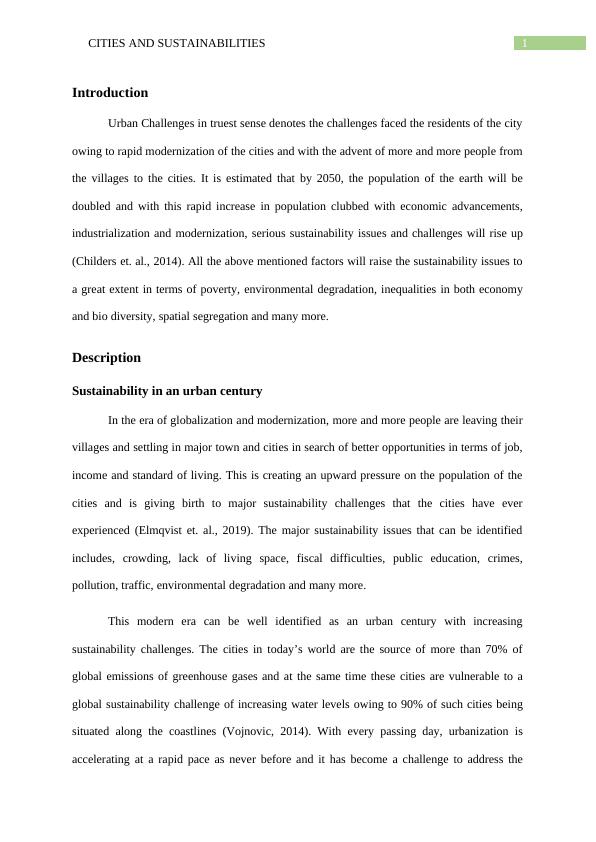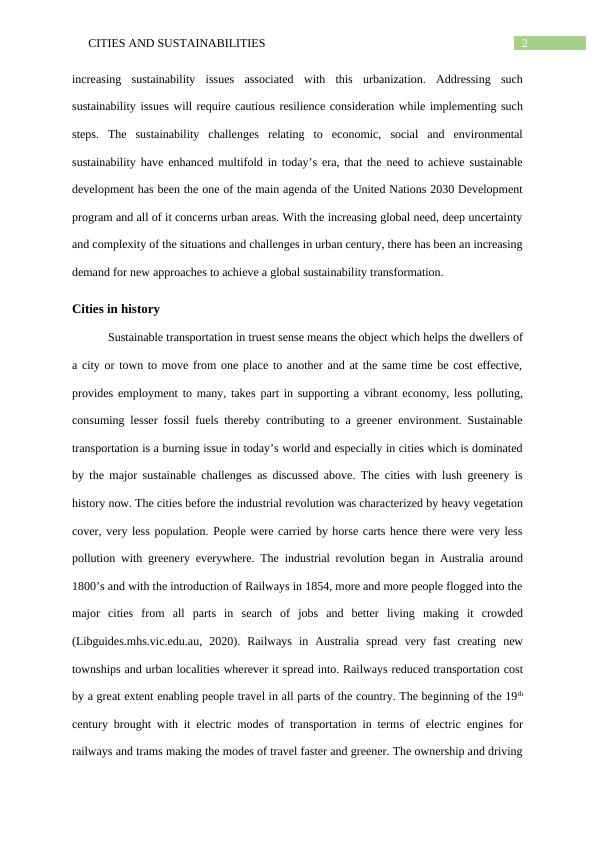THE CITIES AND SUSTAINABILITIES
Analyzing various works on sustainable urban communities and their impact on climate change and human development.
9 Pages1580 Words15 Views
Added on 2022-08-23
THE CITIES AND SUSTAINABILITIES
Analyzing various works on sustainable urban communities and their impact on climate change and human development.
Added on 2022-08-23
ShareRelated Documents
End of preview
Want to access all the pages? Upload your documents or become a member.
Sustainability of Cities
|9
|2717
|46
Negative Impacts of Urbanization on Environmental Degradation
|10
|2095
|33
Air Pollution in Delhi: DPSEEA Framework Analysis and Management
|10
|2584
|281
ICT Role in Sustainable Cities
|23
|5650
|322
Assignment on Urban Health
|18
|2133
|56
Contemporary Design: Cycling as a Solution to Social and Environmental Challenges
|13
|2685
|317



